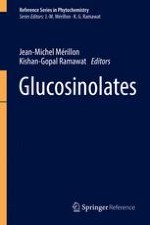2017 | OriginalPaper | Buchkapitel
6. Glucosinolate and Isothiocyanate Production for Weed Control in Plasticulture Production System
verfasst von : Sanjeev K. Bangarwa, Jason K. Norsworthy
Erschienen in: Glucosinolates
Aktivieren Sie unsere intelligente Suche, um passende Fachinhalte oder Patente zu finden.
Wählen Sie Textabschnitte aus um mit Künstlicher Intelligenz passenden Patente zu finden. powered by
Markieren Sie Textabschnitte, um KI-gestützt weitere passende Inhalte zu finden. powered by
